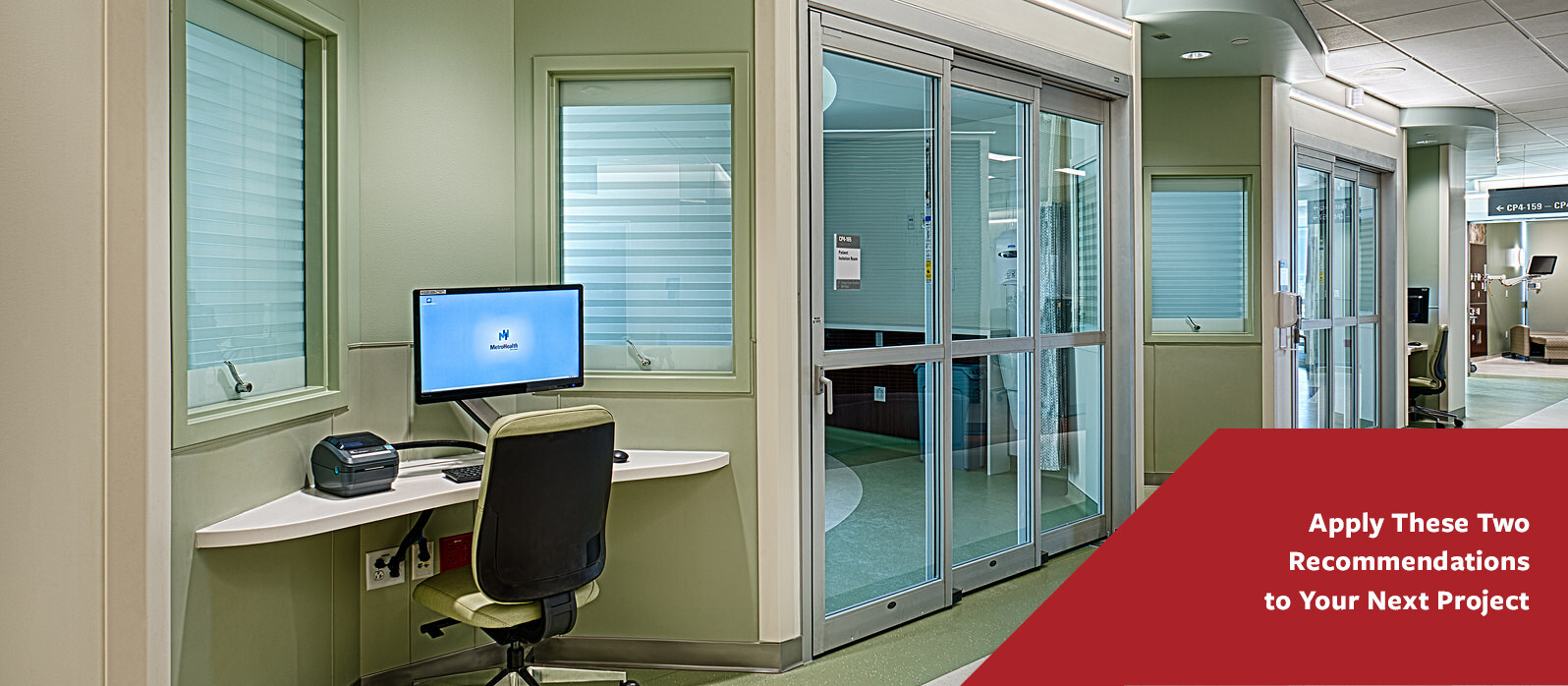Post-Pandemic, 2 Big Ways to Change Healthcare Design for the Better
By James T. Cicero and Rocco Gallo | Nov 18, 2021

Karpinski staff attended the 2021 Healthcare Design Conference. In this series of brief articles, they’re sharing key takeaways from notable conference presentations.
The title of Manuel Hernandez’s presentation, “What We Should Have Learned from the Pandemic but Probably Didn’t” is self-descriptive. Below, Rocco Gallo and Jim Cicero outline two recommendations for design teams and healthcare organizations to apply today.
1. Don’t Try to Design for the Next Pandemic
We don’t know what the next pandemic will be like, Hernandez emphasized. If we’re trying to prepare for the next pandemic and all we have in our memory is COVID-19, what will we do if the next pandemic is transferred by contact rather than air? We won’t be prepared.
Rather than design for the next pandemic, Hernandez said, design the flexibility to adapt to the next pandemic. One of his examples was surgery suites. Pre-op is packed in the morning, and post-op is packed in the afternoon. Knowing this, how can we bring some flexibility to these spaces so they can be temporarily repurposed? Similarly, is there a way to design ICU rooms so that the medical equipment is located in the corridor rather than in the patient room? This would allow staff to monitor and care for the patient while reducing contact and maintaining distance, keeping both safe.
Likewise, Rocco said, wouldn’t you want to do the same thing with your emergency department? Are there adjacent spaces that the ED could expand into if needed?
The bottom line: Adapt your staff, adapt your building, but don’t plan for everything.
2. Design for Caregiver Satisfaction
During the pandemic, healthcare organizations experienced a critical shortage of medical staff. Patient satisfaction went down. Hernandez attributes the decline in satisfaction to the stress of caregivers. He proposed that patient satisfaction is directly linked to caregiver performance.
When it comes to healthcare design, Hernandez said, so often our focus is entirely on the patient experience. If we have a paradigm shift and focus on the caregiver experience, he suggested, we will ultimately enhance the patient experience. This doesn’t just mean giving caregivers a space to relax. It means giving them spaces that function exceptionally for them to perform their job. This might include flexible spaces, expandable spaces, or multi-use type spaces that change throughout the day. If we design for caregiver satisfaction, he said, patient satisfaction will follow.
So often in healthcare design, Jim said, we are asked to put patients at the center of our design. Hernandez’s presentation challenged him to think differently, focusing on caregiver needs to ultimately improve patient satisfaction.